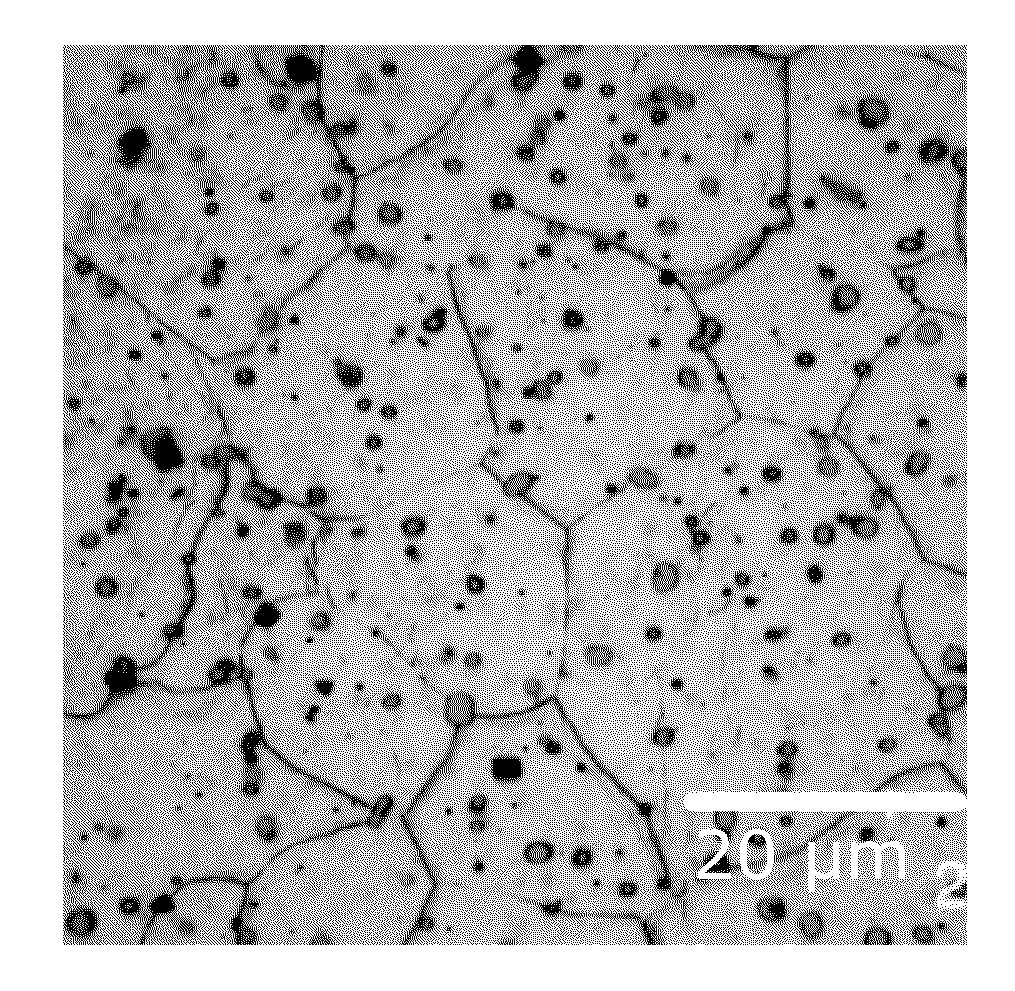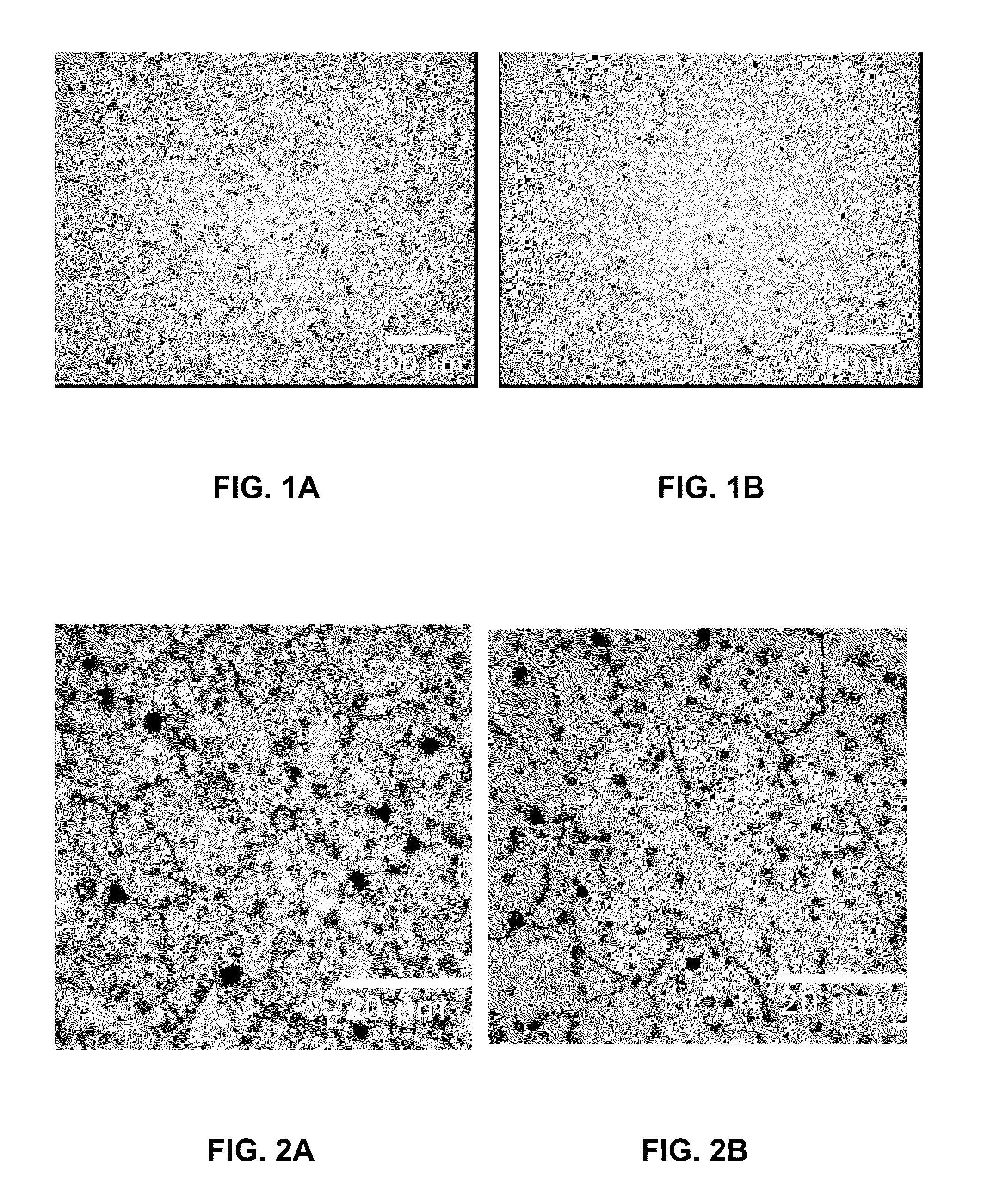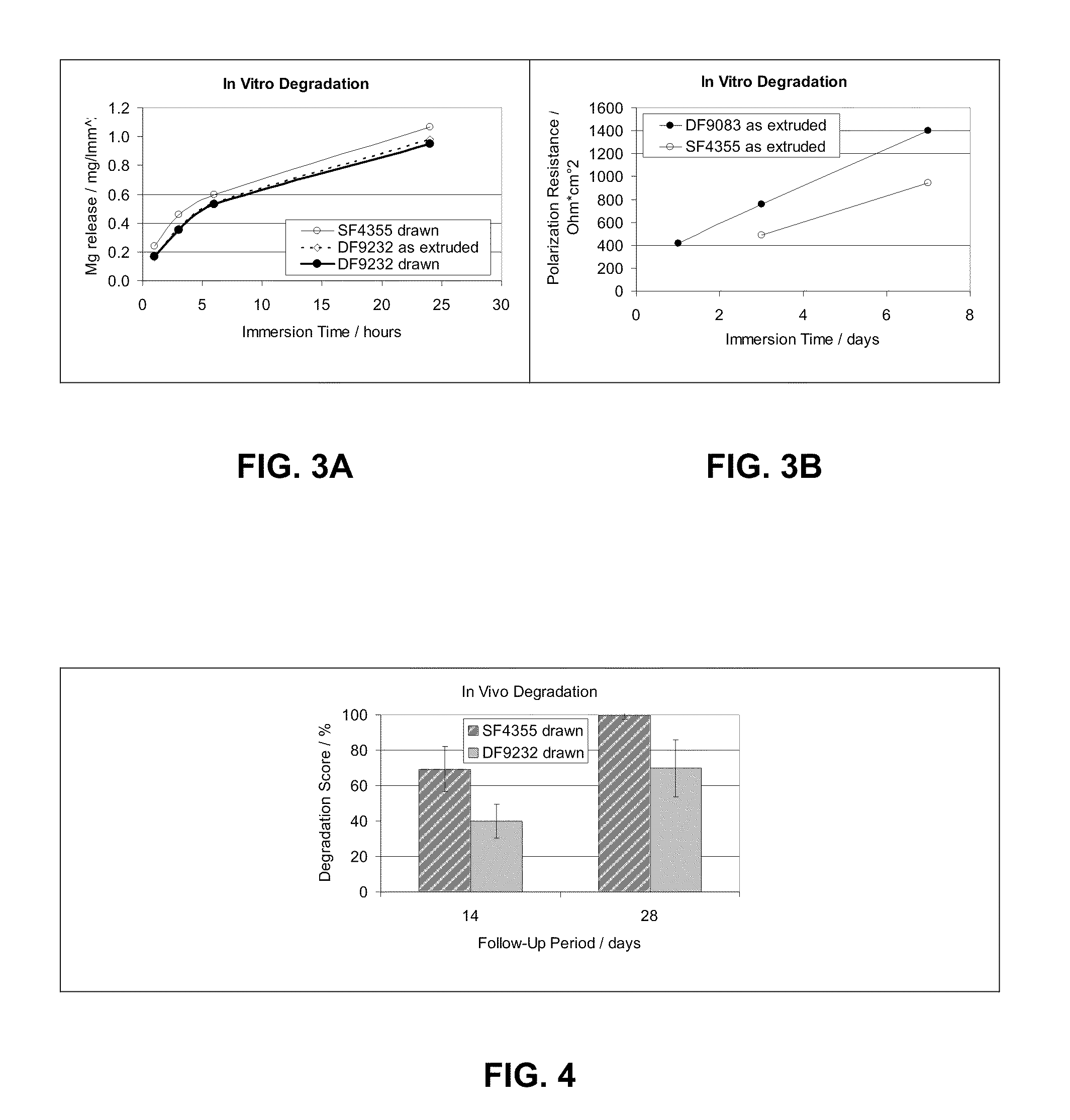Implant made of a biodegradable magnesium alloy
a biodegradable magnesium alloy and magnesium alloy technology, applied in the field of biodegradable magnesium alloy implants, can solve the problems of harmful effects on mechanical properties, dramatic changes in microstructure, and limited use of biodegradable polymers, so as to improve the mechanical properties of materials, improve the processability, and improve the effect of material mechanical properties
- Summary
- Abstract
- Description
- Claims
- Application Information
AI Technical Summary
Benefits of technology
Problems solved by technology
Method used
Image
Examples
Embodiment Construction
[0070]Several melts with different alloy compositions were melted and cast, extruded and were subject to different investigation with the emphasis on the microstructure (grain size, size, fraction and composition of precipitates) and the respective thermo-mechanical properties (tensile properties, recovery and recrystallization behaviour). In general, melts were carried out according to the following casting technique:
[0071]Alloys were prepared, by melting in steel crucibles. The melt surface was protected by use of protective gas (CO2 / 2% SF6). Temperature was raised to 760-800° C. before the molten alloy was stirred to homogenise the melt chemistry. The molten alloy was then cast into a mould to achieve a billet of nominally 120 mm diameter and 300 mm length.
[0072]The billet was machined to nominally 75 mm diameter and 150-250 mm length. The billet was homogenised, by heating to approximately 525° C. for 4-8 hours.
[0073]Extrusion was carried out on a hydraulic press. The product wa...
PUM
| Property | Measurement | Unit |
|---|---|---|
| particle size | aaaaa | aaaaa |
| temperatures | aaaaa | aaaaa |
| size | aaaaa | aaaaa |
Abstract
Description
Claims
Application Information
 Login to View More
Login to View More - R&D
- Intellectual Property
- Life Sciences
- Materials
- Tech Scout
- Unparalleled Data Quality
- Higher Quality Content
- 60% Fewer Hallucinations
Browse by: Latest US Patents, China's latest patents, Technical Efficacy Thesaurus, Application Domain, Technology Topic, Popular Technical Reports.
© 2025 PatSnap. All rights reserved.Legal|Privacy policy|Modern Slavery Act Transparency Statement|Sitemap|About US| Contact US: help@patsnap.com



